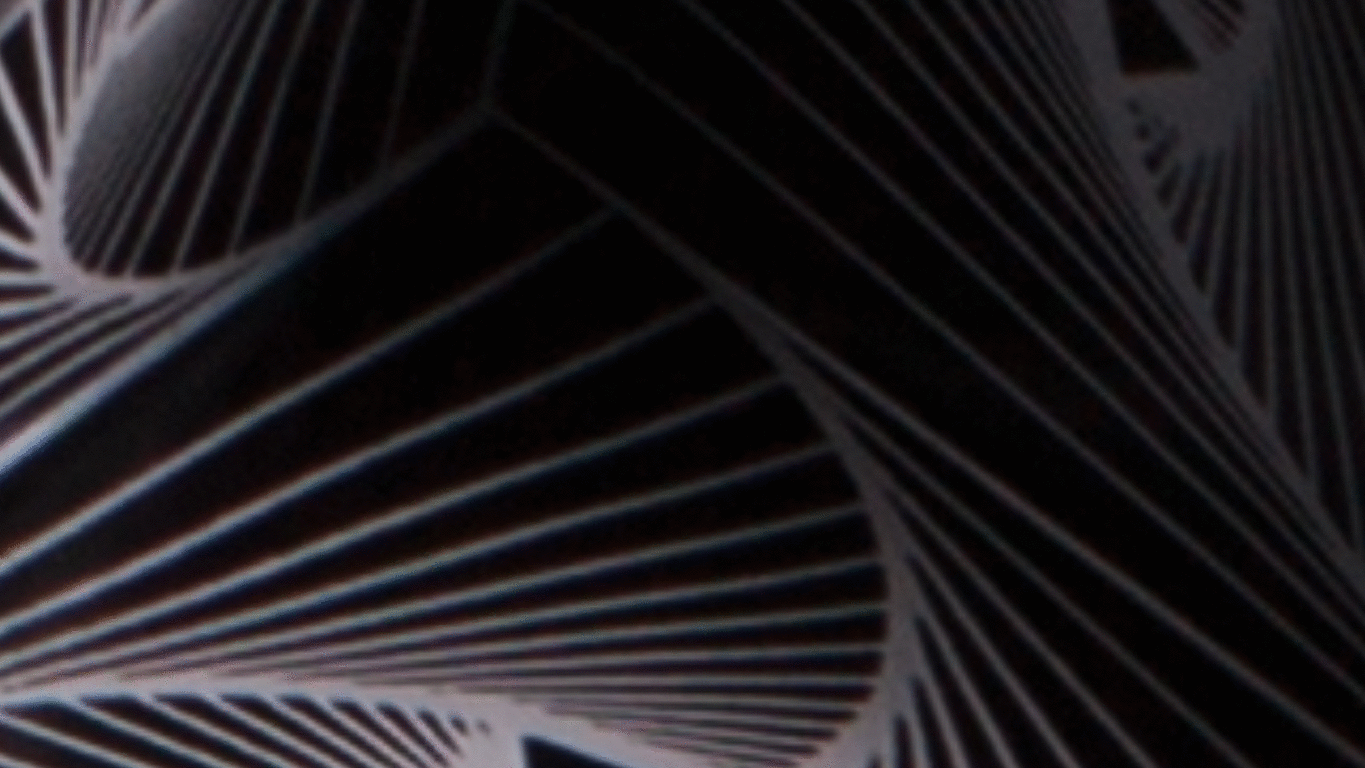 |
Hyperbolic Polyhedra - Triangle
two-sided sculpture dimensions - 123x100x46cm
digital print on photographic paper, plexiglass
|
April 6th to June 6th, 2017
The Faculty of Science of the University of Lisbon is pleased to present HYPERBOLIC HYPARXIS an exhibition by the artist Margarida Sardinha.
PRESS RELEASE
Margarida Sardinha
babelamber@margaridasardinha.com
+351 918 631 894
Digital catalogue
“Henceforth, space by itself, and time by itself are doomed to fade away into mere shadows, and only a kind of union between the two will preserve an independent reality.” – Hermann Minkowski
Hyperbolic Hyparxis is an exhibition comprising 60 new works by the artist Margarida Sardinha for the Faculty of Sciences of the University of Lisbon. The monochromatic site-specific exhibition consists of Hyperbolic Hyparxis (an experimental film), Hyperbolic Curves (a 10ft diameter floating sphere filled with helium), Hyperbolic Polyhedra (4 large scale sculptures), Shadow Symbols and Points, Lines and Distances (respectively 36 and 20 works containing a digital background photograph and a three-dimensional polyhedron overlaying it). The five sets of works complement each other in a liminocentric way, thus, they repeat each other akin to recursive definitions in hyperbolic spaces. Its general concept relates to the following scientific, mathematical and geometrical notions:
Interconnected with the supersymmetric model of Calabi-Yau manifolds, Hyperbolic Hyparxis, conveys the symbolism of geometric sacred structures as shadows of liminocentric or fractal images contemporarily developed through multiverses. It does so by using elements of hyperbolic geometry, which was developed independently by Lobachevsky and Bolyai and it models spaces analogous to Euclidean space, but such that the Euclid’s parallel postulate is no longer assumed to hold as true. Instead, the parallel postulate is replaced by the following statement (in two dimensions):
Given any line L and point P, not on L, there are at least two distinct lines passing through P, which do not intersect L.
This postulate allows, in fact, for an infinite number of such lines to intersect P. However, this axiom still does not characterise the hyperbolic plane uniquely up to isometries; there is an extra variable, the curvature K<0, which must be specified. However, it does characterise this geometry up to homotheties, meaning up to bijections, which only change the notion of distance by an overall factor. By choosing an appropriate length-scale, one can thus suppose, without loss of generality, that K=-1. There are several important models of hyperbolic space: the Klein model, the hyperboloid model, and the Poincaré model. The existence of model spaces implies that the parallel postulate is logically independent of the other axioms of Euclidean geometry. On the other hand, all these models can be related by a transformation, which preserves all the geometrical properties of the space: they are isometric.
Thus, Hyperbolic Hyparxis uses a stream of multiple hyperbolic optical illusions structured as a rhizomatic polyhedral system (hyparxis). These polyhedra are deconstructed into seemingly Calabi-Yau manifolds, which are described in certain branches of mathematics such as algebraic geometry. The Calabi-Yau manifolds’ properties, such as Ricci flatness, also yield applications in theoretical physics. Particularly in superstring theory, the extra dimensions of spacetime are sometimes thought to take the form of a 6-dimensional Calabi-Yau manifold, which led to the idea of mirror symmetry amongst these types of spaces.
Written by Margarida Sardinha and revised by Professor Carlos Florentino (Fac. Ciências, ULisboa).
The Hyperbolic Hyparxis exhibition is organised by Helder Alfaiate Galeria de Arte.
Please use the this secure link to access the digital catalogue of the Hyperbolic Hyparxis exhibition.
The exhibition’s images are available for release upon request – please contact Margarida Sardinha.
Further reference and information
Sem comentários:
Enviar um comentário
As polémicas são bem vindas // Feel free to comment